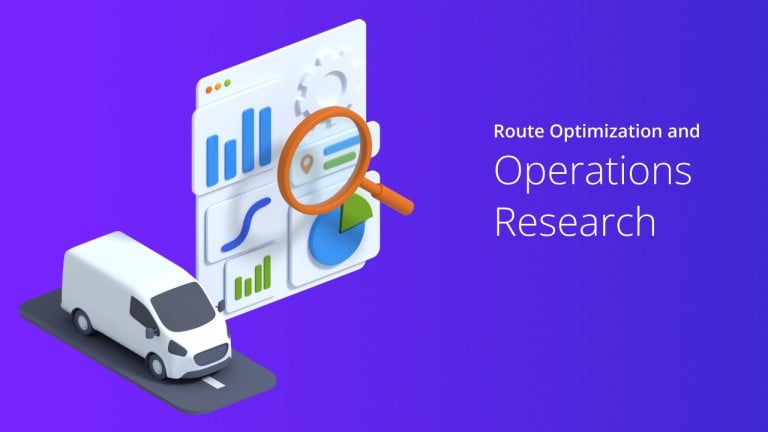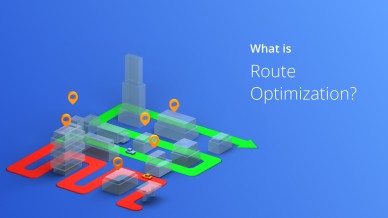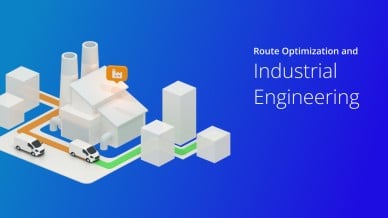Operations Research (OR) has become an essential tool in logistics, especially when it comes to optimizing service and delivery routes. Simply put, OR uses advanced analytics to help businesses make better decisions and tackle complex problems. In this article, we explore how OR is helping companies improve the efficiency of their last mile operations and making advanced route optimization more accessible for all organizations.
Table of Contents
What is Operations Research?
Think of Operations Research as a blend of applied math and science focused on making decision-making easier. It uses mathematical models, statistics, and algorithms to solve complex problems. In logistics, OR is a game-changer for last mile delivery solutions, which is crucial for any company looking to improve efficiency and cut costs in their last mile operations.
Logisticians use OR to streamline supply chain optimization, shorten transport times, slash costs, and make better use of resources through smart scheduling and planning. By applying OR, businesses can tackle the big challenges that come with managing large-scale last mile operations.
Key Applications of OR in Route Optimization
Mathematical Modeling in OR
Companies use OR to apply models for simulating and solving transportation issues. These models take into account constraints like delivery schedules, vehicle sizes, and traffic conditions. They help businesses pinpoint the best ways to organize routes and deliveries.
Algorithms Used in Route Optimization
In route optimization, OR employs a number of different algorithms to create routes between different stops, for example:
- Dijkstra’s Algorithm: This is key for figuring out the quickest path between points, making it invaluable for plotting the fastest routes in a network.
- Traveling Salesman Problem (TSP): TSP is about finding the shortest route that hits a list of locations one time and returns to the start. Solving this helps cut travel time and expenses.
Real-time Data Integration
A strength of using OR in mission-critical route optimization is its ability to incorporate real-time data such as current traffic and weather conditions. This capability allows firms to adjust routes on the fly to stay efficient, regardless of ongoing changes in real-world conditions.
Want to see how Route4Me can streamline your last mile operations?

Using OR to Track and Improve Driver Performance
Key Performance Indicators (KPIs) in OR Framework
Companies employ OR methods to conduct fleet management and monitor driver performance by assessing metrics like on-time delivery, fuel efficiency, and route adherence.
- On-Time Delivery: How many deliveries are made on schedule, a marker of punctuality and reliability?
- Fuel Efficiency: Tracking fuel consumption relative to distance traveled allows companies to assess the efficiency of a driver’s habits.
- Route Adherence: Companies can gain an understanding of when and why drivers are deviating from a specified route, exposing opportunities to refine planning or navigation.
How OR Enhances Driver Performance Monitoring
Using OR, organizations gain insights into performance trends and pinpoint areas for improvement, ensuring drivers meet expectations.
- Data Analysis for Feedback: Regular reviews of performance data provide a basis for constructive driver feedback, fostering continuous improvement.
- Predictive Analytics for Scheduling: OR uses predictions to forecast potential hold-ups and revise schedules to ensure drivers are optimally deployed.
- Route Optimization for Efficiency: Ongoing updates and tweaks to routes, based on both historical and live data, heighten efficiency and reduce wasted travel.
Advanced Techniques in OR for Route Optimization
OR takes advantage of various advanced techniques for logistics-intensive route optimization, for example:
Linear and Integer Programming
Linear programming is essential in OR for tweaking logistical operations to meet multiple goals, like minimizing travel and cost. Integer programming, which deals with whole numbers (like assigning complete routes to drivers), is crucial for real-world situations where fractions won’t do.
Heuristic Methods
Heuristic techniques offer quick, workable solutions when exact answers are hard to pin down. Methods like genetic algorithms and simulated annealing streamline decision-making to provide optimized routes.
Benefits of OR in Route Optimization
Efficiency and Cost Reduction
By adopting OR methods, businesses can significantly cut costs related to fuel and vehicle maintenance while making the most of their resources. This boosts both profitability and effectiveness.
Enhanced Customer Satisfaction
On-time deliveries increase customer satisfaction, strengthen brand loyalty, and enhance a company’s reputation in a competitive market.
Environmental Impact
Route optimization based on OR principles eliminates unnecessary fuel consumption, reducing emissions and supporting sustainability efforts.
The Role of Route Optimization Software
Modern route optimization software, such as Route4Me, leverages OR to deliver automated, advanced logistics-intensive routing. These software tools integrate real-time data and use complex algorithms to streamline logistics management and boost efficiency in last mile operations.
These platforms make sophisticated OR applications accessible for all kinds of businesses, negating the need for heavy investments in OR expertise. They particularly make route optimization feasible for smaller companies that can’t afford a large OR team. By automating complex processes using enterprise-grade route optimization software, businesses can focus more on strategic decisions and maintain effective operations.
Frequently Asked Questions (FAQs) about Operations Research
What is Operations Research, and how does it apply to route optimization?
How does Operations Research improve delivery driver performance?
What are the benefits of using OR in logistics?
How do route optimization software tools like Route4Me incorporate OR?
Can small businesses benefit from OR-driven route optimization?
What distinguishes Route4Me from other routing software?
Conclusion
Operations Research is key in route optimization, providing powerful tools that greatly increase logistical efficiency. With sophisticated models, real-time data handling, and advanced algorithms, OR has changed the way companies track and improve their last mile performance. Route optimizer software like Route4Me allows businesses to benefit from OR without needing extensive in-house expertise. These innovations help companies reduce costs and improve efficiencies, providing a competitive edge in today’s fast-paced market. By embracing OR-driven strategies and tools, businesses can not only set new benchmarks for last mile efficiency but also support their commitment to sustainable practices. As more companies embrace these strategies, the logistics sector will likely see continual improvements, thereby redefining standards for reliability and ecological responsibility in the modern marketplace.


